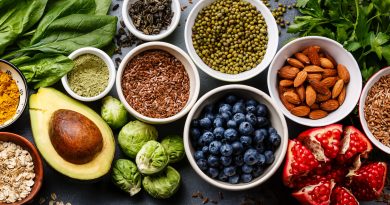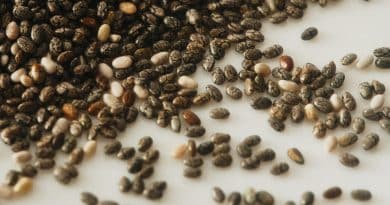Is DASH Eating Right for You?
The DASH Eating Plan was created to help individuals lower or manage their blood pressure without the use of pharmaceuticals. This eating style has also been shown to help lower blood cholesterol levels, decrease inflammation, and improve insulin sensitivity. Over time, these dietary changes can help to lower one’s risk of developing stroke or heart disease.
DASH stands for Dietary Approaches to Stop Hypertension. The eating plan emphasizes nutritious foods such as fruits, vegetables, low-fat/non-fat dairy products, nuts, seeds, and legumes, and less lean meats, poultry, and fish. DASH is effective because it provides good amounts of essential nutrients such as potassium, calcium, and magnesium – nutrients that have an impact on blood pressure.
Note there are additional lifestyle changes you can make to lower your blood pressure and improve heart health. Some of the changes include not smoking, moderate alcohol intake, and regular exercise.
A 2017 research article published in the Journal of the American College of Cardiology compared a low-sodium diet versus a high-sodium diet and its effects on baseline blood pressure. The researchers took 412 adults with pre- or Stage 1 hypertension and instructed them to consume either a control diet or the DASH diet. At the end of the study, there were significant decreases in systolic blood pressure for participants following a low-sodium DASH eating plan. In other words, the less sodium a person consumed, the better their blood pressure level.
The foods recommended as part of the DASH eating plan are naturally low in sodium which is why it can be so effective at lowering blood pressure. The research article mentioned above is one of many demonstrating the benefits of this way of eating.
With a little bit of creativity, you can make plenty of satisfyingly delicious meals abundant with fiber, vitamins, minerals, protein, and heart-healthy fats on the DASH diet. Making small, gradual changes can help build a strong foundation of healthy living.
If you aren’t sure where to begin, here are 4 tips for getting started:
1. Try new recipes – The internet is a great place to get inspired and find some yummy new recipes to try. With time and experimentation you’ll surely find many recipes you love.
2. Eat your fruits and veggies – The plant kingdom of foods is brimming with color, flavor, and enjoyment. You can find creative ways to use fruits and veggies in your meals. Try making smoothies, soups, stew, veggie burgers, and more!
3. Meal planning and meal prep – It helps to sit down at the start of the week and figure out what you would like to eat. Making this practice a habit can help to keep you organized and save time (which is useful if you have a hectic life!). Preparing meals ahead of time by a few days or even the night before is another way to help support you in this new journey.
4. Get moving – Exercise is important for your body to be healthy and can help to lower blood pressure. Find a physical activity you enjoy so you’ll feel more motivated to stick with it. Exercising moderately for just 30 minutes each day can be beneficial.
Now that the knowledge is in your hands, you have the power to make a change in your life for optimal health. Move at a pace that works for you, practice self-love, and enjoy the experience. Keep an open mind as you try new foods and recipes; you never know what you’ll discover!
Reference: Juraschek, S.P., Miller III, E.R., Weaver, C.M., Appel, L.J. (2017). Effects of sodium reduction and the DASH diet in relation to baseline blood pressure. Journal of the America College of Cardiology. Vol: 70, Issue: 23, pages 2841 – 2848. doi: https://doi.org/10.1016/j.jacc.2017.10.011.


